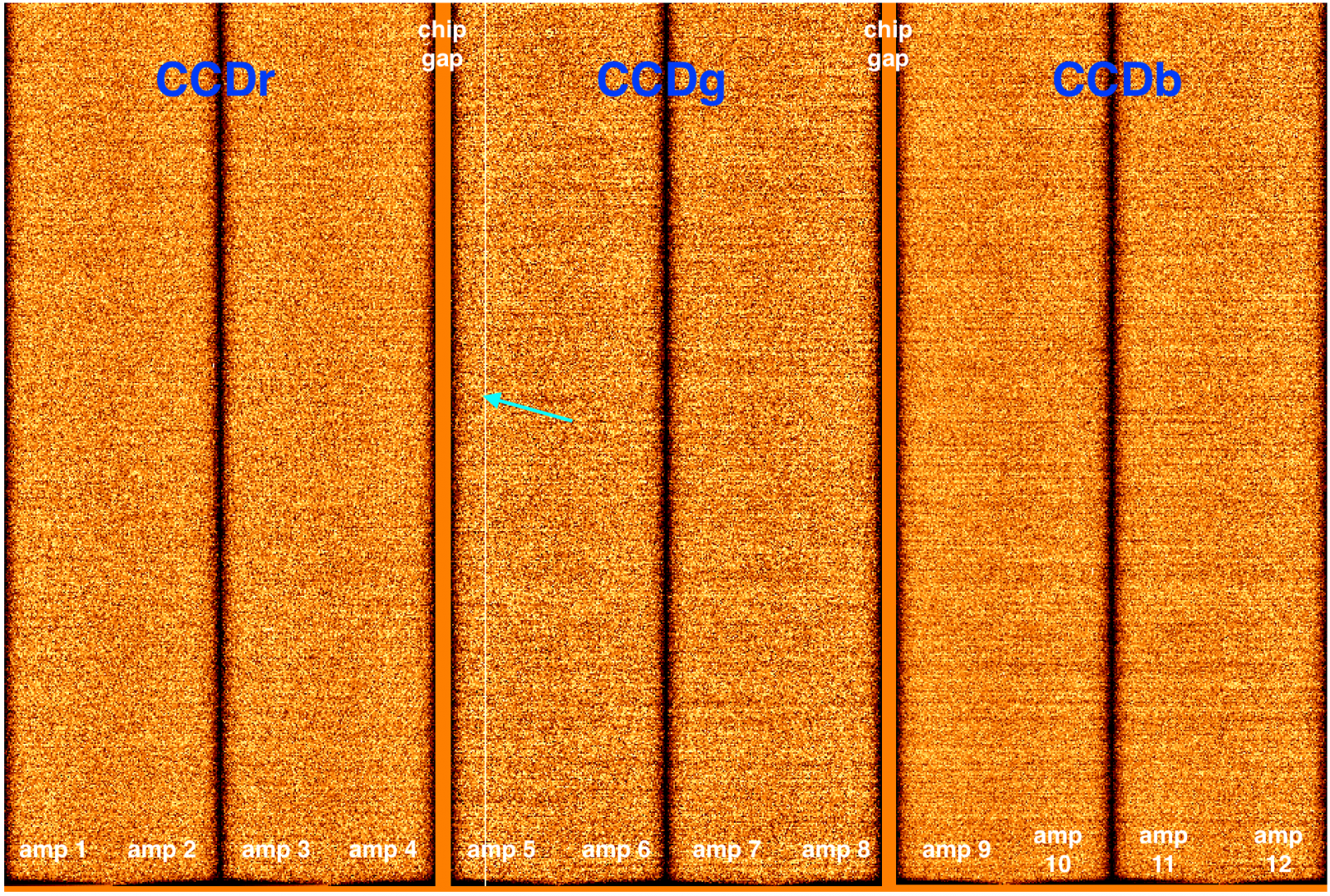GMOS-N status update
The GMOS-N detector issue reported on March 2 has largely been resolved by the full thermal cycle performed between March 2 and 3. The extended bright columns on amplifiers 7 and 12 are no longer present. The narrow bad column of hot pixels on amplifier 5 persists and saturates in longer science exposures. The following figure shows the hot column in an overscan-subtracted bias image (as marked by the blue arrow).
